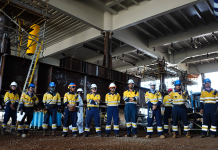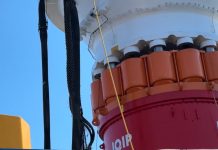By their very nature, wind turbines end up in harsh locations where damage from volatile weather makes them vulnerable.
In fact, wind turbines may be the most exposed of all types of generators connected to electric-power networks. Costly lightning-related damage is most often caused by insufficient direct strike protection, inappropriate or inadequate transient voltage surge suppressors, or unsatisfactory bonding and/or grounding. Lightning damage results in expensive repair or equipment-replacement costs, and it is the leading cause of unplanned wind-turbine downtime resulting in the loss of countless megawatts of power generation. It has been reported that up to 80 percent of paid insurance claims for wind-turbine damage were caused by lightning.
A Real Threat
As tall, isolated towers composed of sensitive electronics, wind turbines face a persistent and real threat from lightning. Advances in wind-turbine technology have made them both more sophisticated and more vulnerable, but a properly designed lightning protection system will prevent physical damage to the turbine by redirecting lightning currents to Earth.
The cost of these lightning-protection systems represents a small portion of the total project capital expense but results in a dramatic improvement in reliability.
Lightning-stroke density in the United States during the 10-year period from 2005 to 2014 ranged from a low of less than one stroke per square kilometer per year in the far West to more than 32 strokes per square kilometer per year in some areas of the deep South and Florida, according to the Vaisala National Lightning Detection Network.
 In its early years in the U.S., the wind-farm industry was concentrated in the low lightning-frequency areas in California, but, as it expanded to other regions, lightning exposure increased dramatically.
In its early years in the U.S., the wind-farm industry was concentrated in the low lightning-frequency areas in California, but, as it expanded to other regions, lightning exposure increased dramatically.
An integrated lightning-protection system design combines several components to minimize risk. Wind-turbine blades, the nacelle, structural components, the drive train, low-voltage control systems, and high-voltage power systems all must be protected. Provisions for personnel safety must also be maintained.
One element is crucial to all wind-turbine lightning protection systems: a low resistance path to Earth. The best Surge Protection Devices (SPDs) available will fail to offer protection if grounding resistance is high.
Designing an effective grounding system for single turbines or entire wind farms in high resistivity environments poses a serious challenge.
Solution to Problem
San-Earth conductive cement offers a safe, economical long-term solution to the wind-farm grounding problem. It was specifically developed for locations where resistivity is high and access may be difficult. The recommended design for a conductive cement electrode system for a single wind turbine is shown in Figure 1. It consists of a perimeter ground totaling 60 meters (197 feet) in length combined with four radial electrodes 30 meters (98 feet) each in length and yields a resistance value of 2.5 ohms in 300 ohm-meter soil. The conductive cement electrodes are 0.25 meters (10 inches) wide and installed at a depth of 1 meter (39 inches).
In the higher resistivity environments often associated with wind-farm installations, similar low-resistance values can be achieved by simply increasing the length of the radials. Four 75-meter (246 foot) radials yield a resistance of 2.4 ohms in a 500 ohm-meter resistivity environment.
Installation is easy. First, 0.25-meter (10-inch) wide trenches are dug to an appropriate depth, 1 meter in the example in Figure 1. The product can be installed as a dry powder or mixed with water and applied as a mortar. A counterpoise wire is placed in the trench, so the material surrounds it. Over time, the cement hardens to become a conductive solid. Thus, the surface area of the grounding electrode is greatly increased, and lower resistance values are achieved. Corrosion in the counterpoise wire is prevented and conductor theft becomes much more difficult.
Connecting Turbines
Wind turbines grounded in this way can be connected together to achieve even more dramatic results. In Figure 2, the grounding electrode systems for three turbines are connected together using the San-Earth design. Vertical ground rods, often difficult to install at wind-farm locations, are not needed to achieve a consistent low-resistance connection to Earth.
Grounding resistance and soil resistivity are, by definition, proportional. The system inFigure 2 would yield a resistance value of 1.32 ohms in a 1,000 ohm-meter resistivity environment. Even if the resistivity went as high as 3,000 ohm-meters, this design would produce a resistance value below 4 ohms.
Wind-turbine grounding systems must be designed, so excessive overvoltages are prevented and potential gradients that could cause damage to equipment or threaten human life are eliminated. With San-Earth, that goal can be achieved easily and economically.
San-Earth is manufactured in the U.S. and is ideal for use in areas where soil resistivity is high. It reduces construction costs and produces long-term consistent results. It is environmentally safe and conforms to IEC Standard 62561-7.



























